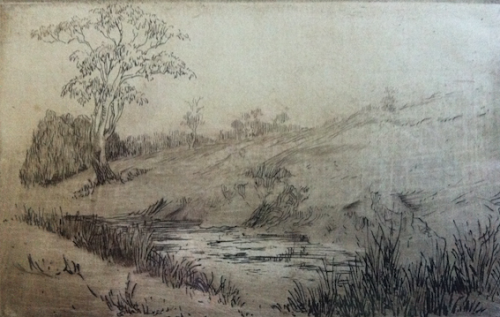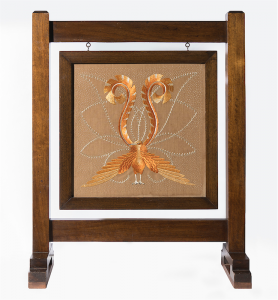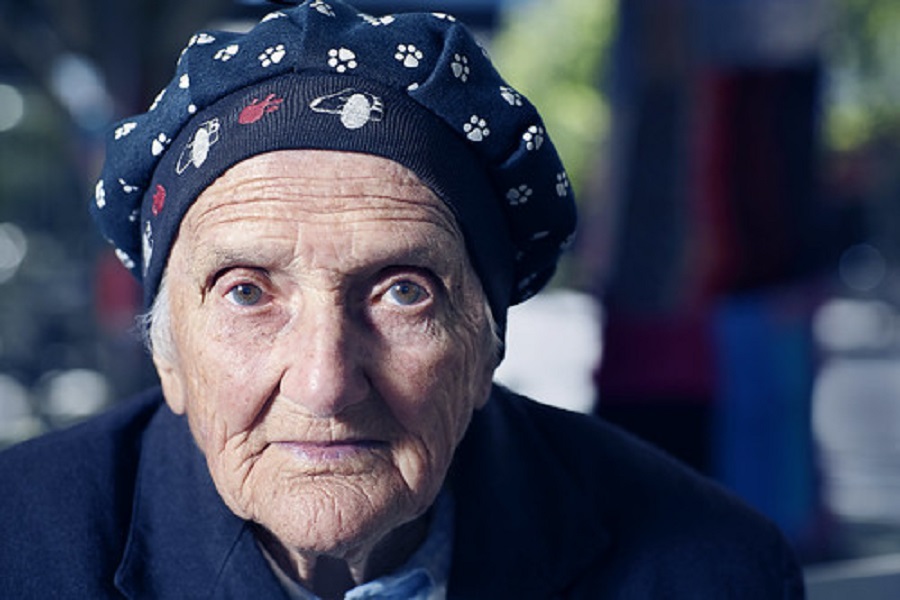
THE name Eirene Mort (1879-1977) may not ring a bell, but the Canberra Museum and Gallery is changing all that with its summer exhibition, “Eirene Mort: a livelihood”.
A tribute to the multifaceted work of a dedicated designer-maker, artist, teacher, writer, historian and “new woman”, it’s likely to prove a sleeper for the gallery, one that will repay close attention to detail and many visits.
Mort, who lived until the age of 98, was a mighty proponent of Australian materials and motifs in the decorative arts, transporting the “English Arts and Craft” movement to an Australian context. Now, thanks to a gift to CMAG from her heirs, curator Dale Middleby and researcher Pam Lane have built a compelling story through the artefacts left behind.

On show is Mort’s purple georgette gown, bought in Paris. There are her ceramics, embroidery, wildflower painting books, a children’s book she illustrated for Mary Gilmore, woodblocks, posters for women in art, an image of the god Pan with kangaroo feet, Sheridan sheets featuring her designs, a lyrebird-decorated firescreen, personalised bookplates and a medal from Sydney University presented when she was a girl.
There is also a tapestry she conceived for Frensham School in Mittagong, where she taught and designed with the specification that it “must be gay and must have a swagman in it”.
“She was a jobbing artist,” Middleby says.
“She made money from teaching and art, tapping into middle-class women wanting to make their homes beautiful through her wallpaper, embroidery and designs.”

Mort worked professionally throughout her life, even at age 89 submitting entries to the design competition for Australia’s decimal coinage.
Mort was nothing if not well connected, numbering “Winnie the Pooh” illustrator EH Shepard among her English friends. Her sister Eunice, whom she visited in London, knew artist Thea Proctor and also George Lambert, who lived in a flat upstairs there.
Her father was an Anglican minister and her mother a gifted linguist who spoke five languages and she herself attended the progressive St Catherine’s Clergy Daughters’ School in Waverley, Sydney.
But Mort wasn’t just a city girl who holidayed with her aunt and uncle in Gungahlin, where she learnt fishing, riding and cricket, doing what the boys did. An acute observer and chronicler, she also saw Canberra change from pastoral acreage to national capital.
As a young adult, Mort studied art with Antonio Dattilo Rubbo and Albert Fullwood, then in London at the Grosvenor Life School, the Royal School of Art Needlework and the Royal College of Art, South Kensington.
Truly radical in her personal life, she eschewed marriage, living with her partner of 60 years, the wood artist Nora “Chips” Weston, first in Vaucluse and then in the southern highlands.
“The way the family looked on her lifestyle, it was the arts,” Middleby says.
“The exhibition shows how visual arts and social history can intersect and expose each other… it all goes towards making a richer story,” and she advises visitors to take time and consider Mort’s incredible virtuosic output.
CMAG was able to mount such a substantial exhibition because in 2013 the family made a donation of artistic equipment and edition plates of her etchings. The show makes space for a country cousins section, a Eunice section, a Canberra section and a section devoted to Nora Weston.
Her work is collected by the National Library and the National Gallery, yet little has been published about Mort so almost everything on show is a revelation.

So why does the name Mort only conjure up memory of her industrialist great-uncle, Thomas Sutcliffe Mort, after whom Mort Street in Braddon was named?
Largely because she didn’t transcend her time. As a devotee to the English “Arts and Crafts” movement, she was overshadowed by Australia’s women modernist artists such as Grace Cossington Smith, Thea Proctor and Margaret Preston.
“She thought they were vulgar, but she got lost in their bright lights,” Middleby says.
“Eirene Mort: a livelihood”, at the Canberra Museum and Gallery, Civic Square, until February 25.
Who can be trusted?
In a world of spin and confusion, there’s never been a more important time to support independent journalism in Canberra.
If you trust our work online and want to enforce the power of independent voices, I invite you to make a small contribution.
Every dollar of support is invested back into our journalism to help keep citynews.com.au strong and free.
Thank you,
Ian Meikle, editor








Leave a Reply